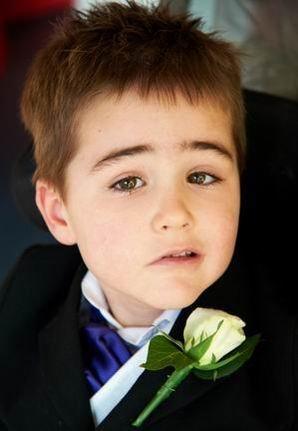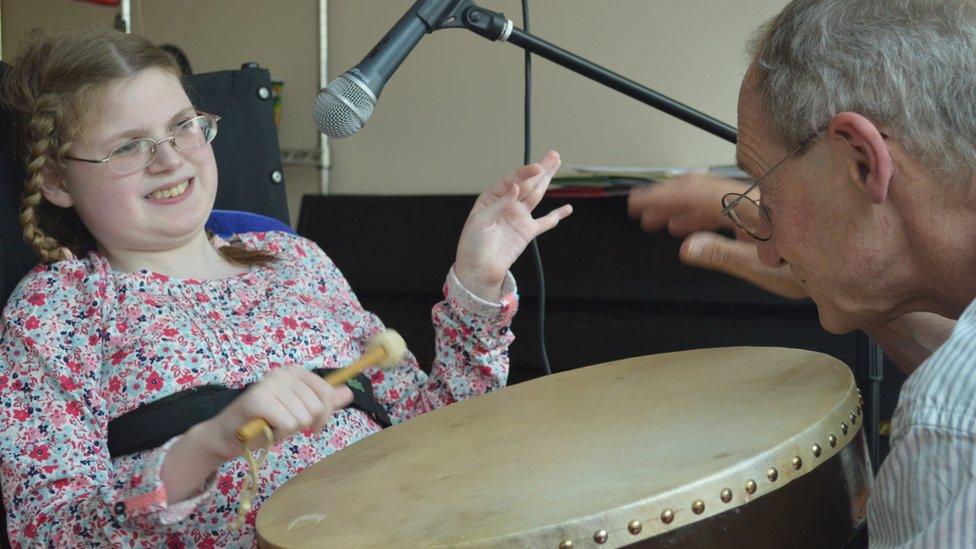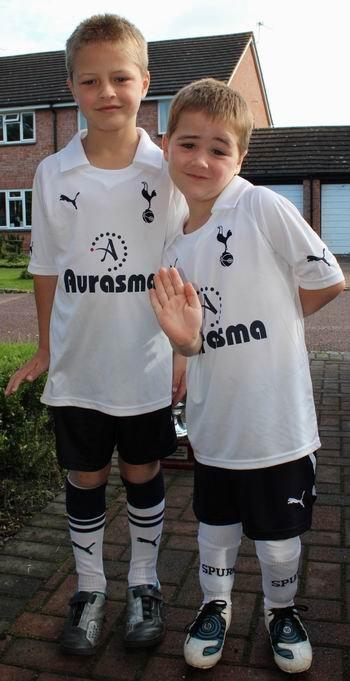Guidelines urge improved care for terminally-ill children
- Published

Ollie was five years old when he was diagnosed with an incurable brain tumour
Sarah Young remembers being told the devastating news that nothing more could be done for her five-year-old son, Ollie.
Days earlier, he had been diagnosed with an incurable brain tumour and now he had been given just weeks to live.
His health deteriorated rapidly, leaving him paralysed down his left side, but a visit to a children's hospice in Oxford proved to be a turning point for the whole family.
"Ollie perked up immediately when we got there. He was relaxed, he was chatting and he couldn't wait to get in the water," Sarah says.
Over the following week, while he was still able, he splashed about in the hospice's hydrotherapy spa, played in the sensory room and loved making as much noise as possible in the music room.

Ollie attending his parents' wedding
By the time of his second visit to Helen House, Ollie was confined to a bed - but the care he received was just as attentive and amazing, according to his mum.
"I felt like we were treated as a special case. Ollie thrived. That's why he lasted so long. It was down to Helen House. At home or in hospital, he wouldn't have left us happy."
But not every family's experience of end-of-life care is as comforting as that experienced by the Youngs.
Vulnerable children
And that is why NICE (National Institute for Health and Care Excellence) has published draft guidance this week which seeks to improve care for the estimated 40,000 children and young people in England living with a life-limiting condition.
These can include cancers, genetic conditions and rare or chronic diseases.
With improvements in neo-natal and intensive care, this population of vulnerable children has been growing over time but experts say there is not enough understanding about what they face, nor enough funding of children's palliative care.

Charlotte plays the drums with Pete, the music therapist at Helen House
The guidance recommends that children and their families should be able to choose the type of care they receive and the place where they want to spend their final days.
Often, it notes, there is an assumption that the best place to die is at home but it says there are many other factors to consider - such as how to manage the dying child's pain and symptoms alongside the daily demands of family life.
Places like Helen House, which specifically cares for children and has eight beds, have the time, staff and resources to provide end-of-life care.
The guidance highlights the importance of using music, art and pictures to help children explore their feelings and questions about what is happening to them.
And it suggests that children, young people and their parents or carers should be offered emotional and psychological support to help them cope with distress.
'Unimaginable'
Dr Emily Harrop, interim chairwoman of the NICE guideline committee and consultant in paediatric palliative care at Helen & Douglas House in Oxford, says care around the country is patchy.
"To lose a child is a tragic, unimaginable, life-changing event. However, the way the death is handled by the professionals around a family, can make an enormous difference."
She stressed the importance of communicating with children in an age-appropriate way and empowering families by really listening to their wishes.
Dr Harrop recalls a terminally ill boy in her care whose eyes lit up when he was able to have a musical conversation with a music therapist and another child, who could no longer speak, who was able to communicate his pain through pointing at pictures.

Ollie Young (R) with his brother Alfie
"These techniques can draw out a distressed person, give them a sense of autonomy and make them relax," she explains.
Zoe Picton-Howell, a lay member of the NICE guideline committee, who lost her son Adam in March 2015, when he was 15, echoes Dr Harrop's comments.
She says: "The most helpful thing was to have healthcare professionals who took the time to listen to Adam.
"When we worked together, Adam got the best care possible, but if a member of the team thought they knew best and became uninterested in what Adam wanted, his care tended to be bad."
Listening to the family
The guidance also refers to ways of helping to manage pain without resorting to drugs - which include music, massage and holding patients.
Sarah Young says all these elements played a crucial part in Ollie's care in the weeks before he died in 2012.
"Massage helped because he had bedsores and had to be turned regularly.
"And there was always someone talking to him, playing music, giving him a drink and listening to him."
The needs of Ollie's older brother Alfie, who was eight, were not forgotten either.
In Ollie's final days, leading up to his sixth birthday, Sarah says she felt very reassured because there was always time for her questions to be answered and her concerns to be heard.
When it came to preserving memories of Ollie - which some people choose to do with handprints, locks of hair or photos - the family set up a foundation, external in his name which funds paediatric brain tumour research and support.
"I don't know where we'd be now if it hadn't been for the support we received at Helen House," Sarah says.
The consultation for NICE's draft guidance is open until 12 August 2016. Comments are welcome through the NICE website, external.